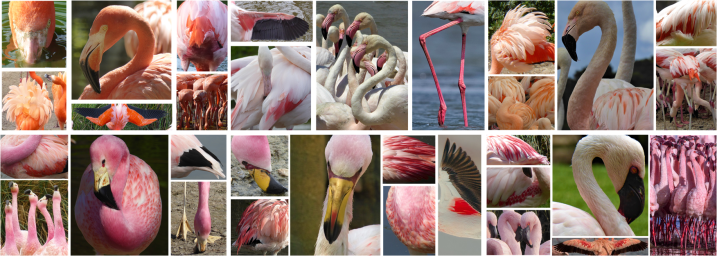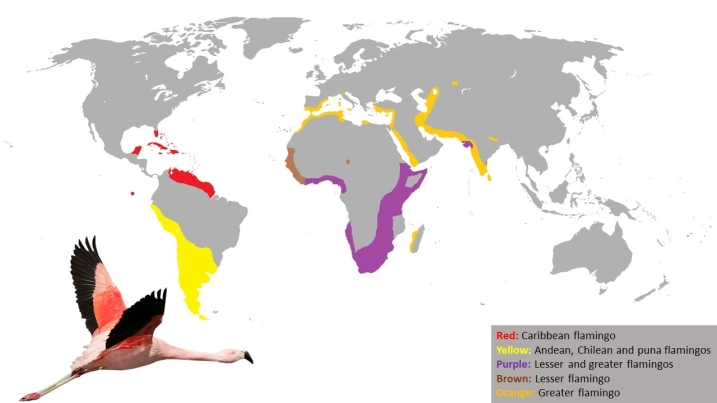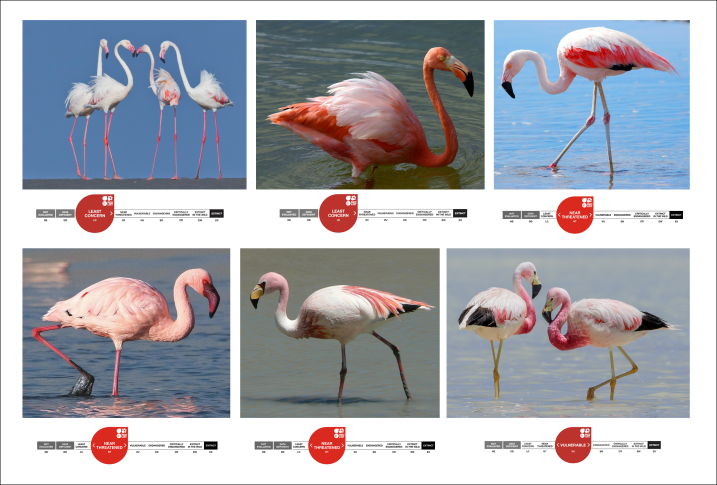International Flamingo Day - Caring for Flamingos Around the World
Flamingos are global. They occur in the wild on every continent except for Antarctica and Australia. And birds kept under human care are found in zoological collections across many, many countries. Flamingos have awed and inspired humans and our culture for generations, appearing in stories, art, and other media. To celebrate the global appeal of flamingos, International Flamingo Day occurs each year on 26th April. This is a day to celebrate and advocate for the pink birds and their fantastic wetland habitats.

One of the most famous depictions of flamingos is a life-size painting of a Caribbean (or American) flamingo by the acclaimed US ornithologist and artist John James Audubon. This life size picture formed part of Audubon’s book “The Birds of America”, sometimes called the world’s most expensive natural history book. This painting is loved and admired by many and is the inspiration for International Flamingo Day occurring on 26th April – the date of Audubon’s birthday.
International Flamingo Day has key aims of education, explanation, empowerment and encouragement.
To educate people about flamingos, their natural history and behaviour, how they live and where they live. The more we understand and appreciate a living being, the more we are likely to care for them and keep them safe. WWT’s flamingos are amazing ambassadors for their wild cousins, and have been inspiring generations of visitors since the 1960s.

To explain which flamingos are threatened and why they are in need of their help.
To empower people to take steps at home that can ultimately benefit the natural world more widely, and ultimately flamingos. Even small steps make a big difference.
To encourage everyone to appreciate flamingos, wherever they are, and in whatever way they get to see them – in a natural park or nature reserve, at a local zoo, on television or the internet, or in a book or photograph.
There are six species of flamingo and four of them (Chilean, puna, lesser and Andean) need our help. The IUCN Red List, the global assessment of how threatened species are, explains the challenges that wild flamingos face. Three species (Chilean, Andean, lesser) have a declining population in the wild. Human pressures on the fragile wetlands they depend reduce the number of chicks they can produce. Although there might be millions of flamingos in the world, their habit of nesting in only a small number of wetlands means they do not have new homes to go to if we alter the wetland they are currently using.

So how can you help flamingos directly, even when they seem like tropical birds living many thousands of miles away? Little things like not wasting water, recycling, being more sustainable in shopping habits, thinking about replacement and repair of battery powered devices all help flamingos, and other wildlife too. A major threat to wild flamingos is mining of lithium that drains high mountain wetlands of water. Lithium is used in batteries for electronic devices, such as mobile phones, tablets and electric cars. By repairing and recycling your devices, you are helping to change how we use lithium and then we can avoid excessive exploitation and degradation of the flamingo’s home.
WWT has flamingos at four of its centres: WWT Slimbridge, WWT Martin Mere, WWT Washington and WWT Llanelli. These birds make valuable contributions to our knowledge of their biology and behaviour, and help in conservation action to make sure populations under human care are sustainable.
You can find loads more information about International Flamingo Day on the IUCN Flamingo Specialist Group’s Facebook page, with free downloads and other fun stuff to promote the pink birds to everyone.
A big thank you from all of the flamingos to all of you, however you appreciate flamingos. At WWT, in the wild, through this Flamingo Diary. Thank you for caring about them and their wild wetland homes. And make sure you tell your friends and family why they are so amazing!



